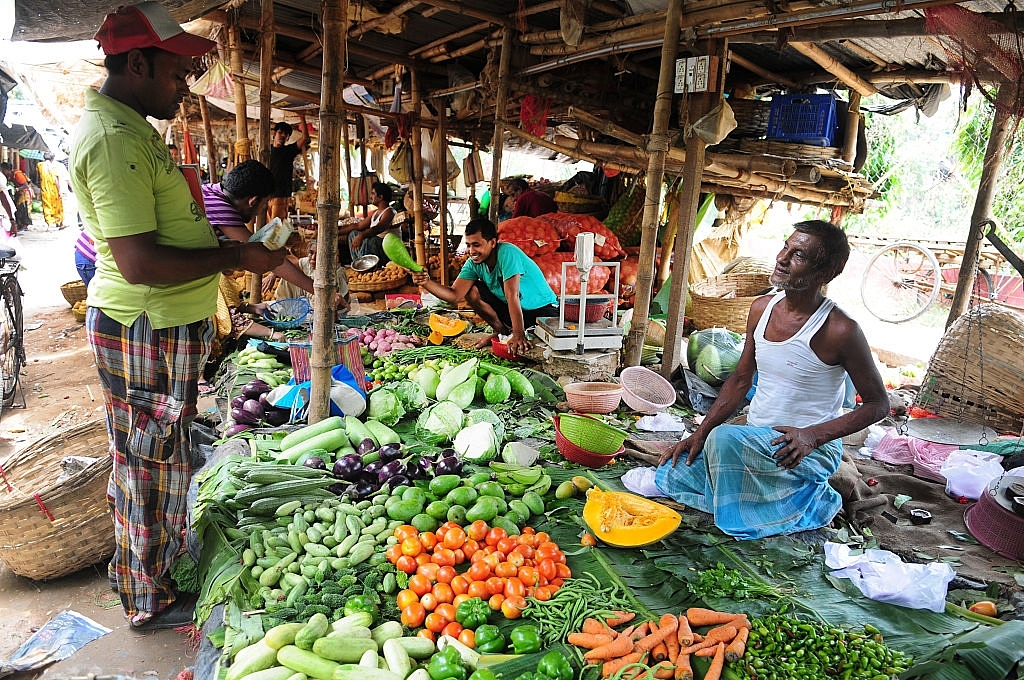Business
Inflation In Southern States, Especially Rural, Higher Than Other Parts Of The Country
- On an average, consumer price inflation in rural areas outpaces inflation in urban areas by as many as 80 basis points.

A vegetable market at Banshdroni, a Kolkata suburb. (Indranil Bhoumik/Mint via Getty Images)
The Consumer Price Index (CPI) inflation soared to 4.88 per cent in November, registering biggest month-on-month jump in the last 16 months. This increase was on expected lines but the final numbers surpassed all expectations.
The Reserve Bank of India (RBI) had come under intense criticism for repeatedly getting the prediction on inflation behaviour wrong. However, in the latest policy review meeting for December, it had projected inflation to remain in 4.3-4.7 per cent range for the second half of financial year (FY) 2018, revising and raising it from October projection of 4.2-4.6 per cent.
So, it must have heaved a big sigh of relief that its projection has finally come true though slightly overshooting the expectation. However, presently the central bank would be more worried about how to tame the inflation going forward.
As usual, food and fuel inflation played a part in the spike. The former doubled to 4.41 per cent from October to November while the fuel prices also increased by 7.92 per cent during the same period. But, core inflation (which excludes food and fuel) is what the RBI targets and it also rose sharply to 4.83 per cent, meaning that the food and fuel inflation alone are not the culprits. Housing inflation quickened to 7.36 per cent from 4.98 per cent last year which is a reflection of pay commission hikes of government employees.
The State Bank Of India’s (SBI) Ecowrap report makes a very interesting observation that inflation in Southern states is higher than other parts of the country mainly due to higher rural inflation over urban inflation as is shown in the table below.
Also, starting 2012, except for 13 months, consumer price inflation in rural areas outpaces inflation in urban areas by as many as 80 basis points on average. However, recently, urban inflation is also rising thanks to housing inflation (due to pay hikes factor) and rise in fuel inflation (due to constant LPG price hike for non-subsidised cylinders)
Apart from inflation numbers, the Index of Industrial Production (IIP) figures also gave a reason for concern. IIP growth declined to 2.2 per cent in October compared to 4.1 per cent in September and 4.2 per cent in October last year. This was chiefly due to steep decline in mining (0.2 per cent), a sector which registered a whopping growth of 7.8 per cent in September. Though, manufacturing industry improved from previous months, it wasn’t enough to compensate for decline in mining sector. Electricity sector also had a lacklustre performance (3.2 per cent).
These two developments point towards a scenario where it looks like that the RBI may have underestimated the inflation this time (as opposed to overestimating for the last 14 months) and may have overestimated growth for the second half of FY18. Will this trend hold? A lot would depend on where the fuel prices finally settle at and how food inflation plays out in the next six months. Finance Ministry and the central bank must stay on guard.
Support Swarajya's 50 Ground Reports Project & Sponsor A Story
Every general election Swarajya does a 50 ground reports project.
Aimed only at serious readers and those who appreciate the nuances of political undercurrents, the project provides a sense of India's electoral landscape. As you know, these reports are produced after considerable investment of travel, time and effort on the ground.
This time too we've kicked off the project in style and have covered over 30 constituencies already. If you're someone who appreciates such work and have enjoyed our coverage please consider sponsoring a ground report for just Rs 2999 to Rs 19,999 - it goes a long way in helping us produce more quality reportage.
You can also back this project by becoming a subscriber for as little as Rs 999 - so do click on this links and choose a plan that suits you and back us.
Click below to contribute.
Latest